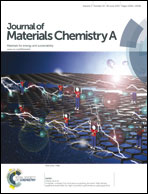Graphene–bacteria composite for oxygen reduction and lithium ion batteries†
Abstract
Owing to its extraordinary properties, graphene materials have changed the landscapes in many technical areas. However, their applications (e.g., in energy conversion and storage) are often limited due to the lack of intrinsic electrochemical activity and restacking between graphene sheets. In this study, we demonstrate the synthesis of a heteroatom-doped graphene–bacteria composite using chemically-exfoliated graphene oxide as the precursor and E. coli as the reducing agent, spacer and doping source. As a proof-of-concept demonstration, we show that the carbonaceous rGO/E. coli composites are excellent electrode materials for the oxygen reduction reaction and lithium ion batteries.


 Please wait while we load your content...
Please wait while we load your content...